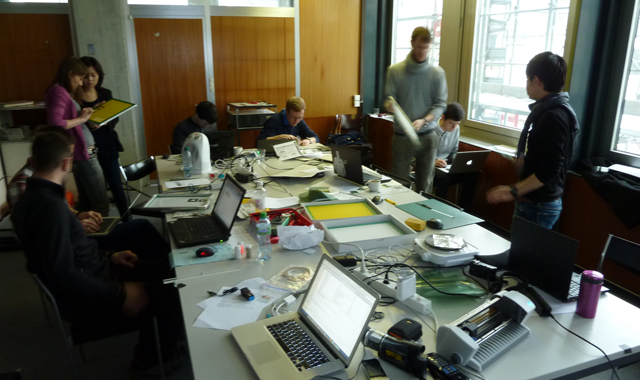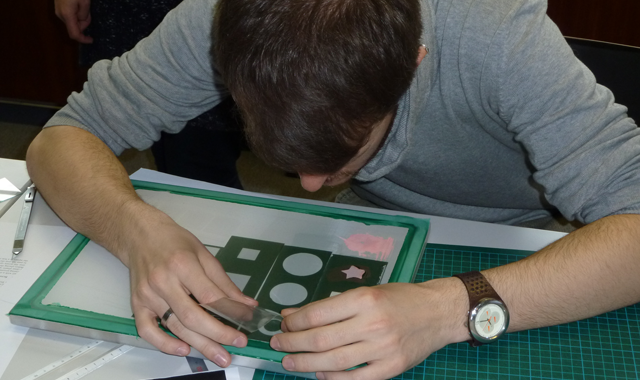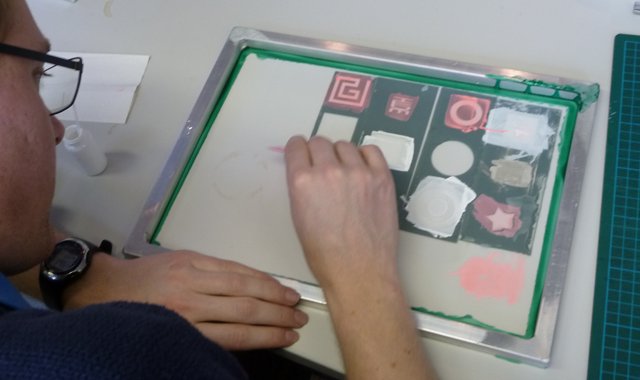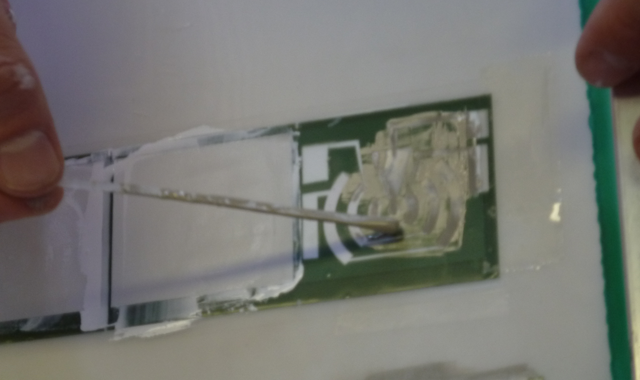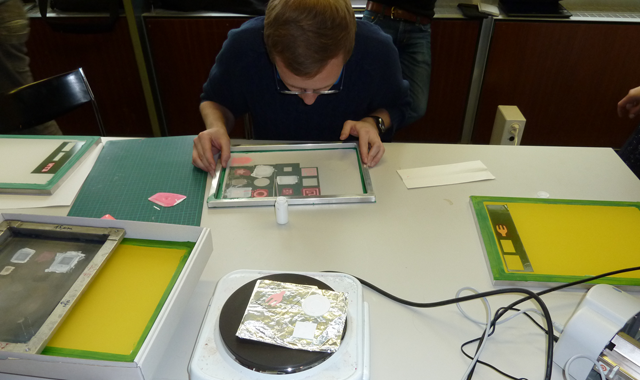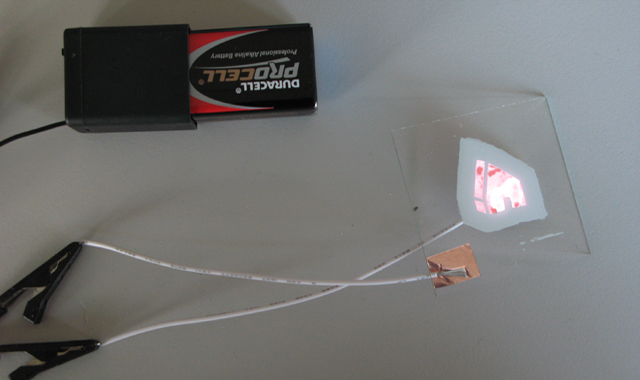M6: EXPERIMENT: DIY EL SCREEN
This is how it works:
– The copper precipitates to form nanocrystals of copper sulfide. These enhance the strength of the electric field in the phosphor.
– The zinc sulfide and silver form a semiconductor matrix.
– When a positive field is applied, holes enter the matrix; when a negative field is applied, electrons enter the matrix.
– Light is produced when electrons and holes recombine on a silver atom in the matrix.
There are four basic components inside an Electroluminescent display:
1. Transparent, conductive electrode
2. Phosphor
3. Dielectric (Insulator)
4. Non-transparent, conductive electrode
Components diagram:
For more information about this process visit:
http://sites.google.com/site/elen4193/
And this is us, making some screens:
Placing the film for the screen
Applying the second dielectric layer
The last layer, silver
Waiting for it to dry
EL screens working
Step by step video:


